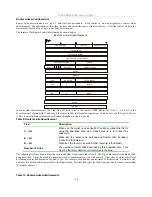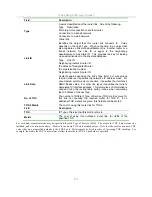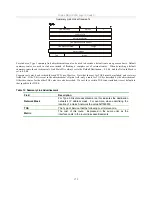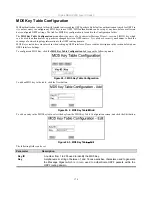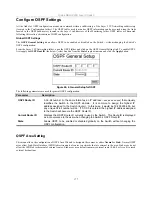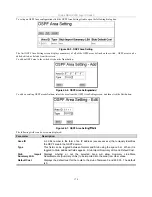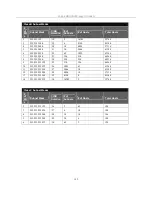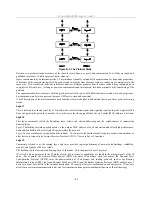
D-Link DES-3326S Layer 3 Switch
Area Aggregation Configuration
Area Aggregation allows all of the routing information that may be contained within an area to be aggregated into a summary
LSDB advertisement of just the network address and subnet mask. This allows for a reduction in the volume of LSDB
advertisement traffic as well as a reduction in the memory overhead in the Switch used to maintain routing tables.
Click the OSPF Area Aggregation Settings link to view the current settings. There are no aggregation settings configured by
default, so there will not be any listed the first accessing the menu.
To configure OSPF Area Aggregation on the switch, click the
Area Aggregation Configuration
link in the OSPF folder:
Figure 24- 12. OSPF Aggregation Configuration
To add an OSPF Area Aggregation entry on the switch, click the
New
button:
Figure 24- 13. OSPF Aggregation Configuration
−
Add
Specify the OSPF Aggregation settings and click the
Apply
button to add or change the settings.
The following settings for OSPF Area Aggregation can be set or are displayed::
Parameter Description
Area ID
Allows the entry the OSPF Area ID for which the routing information will be aggregated.
This Area ID must be previously defined on the Switch.
Network Number
Sometimes called the Network Address. The 32-bit number in the form of an IP address
that uniquely identifies the network that corresponds to the OSPF Area above.
Network Mask
The subnet mask used for the OSPF Area.
LSDB Type
Specify the type of address aggregation. Choose
Summary
or
NSSA-Ext
.
Advertisement
Select
Enabled
or
Disabled
to determine whether the selected OSPF Area will advertise
it’s summary LSDB (Network-Number and Network-Mask).
182



